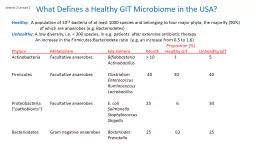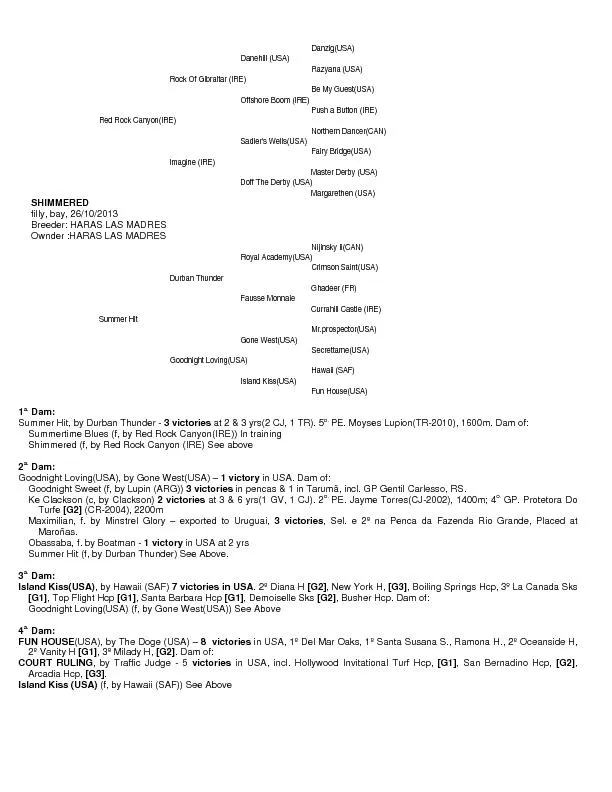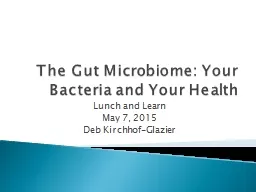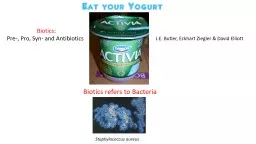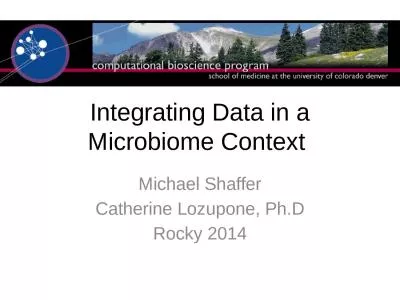PPT-Session 2 Lecture 2 What Defines a Healthy GIT Microbiome in the USA?
Author : eddey | Published Date : 2022-06-15
Healthy A population of 10 14 bacteria of at least 1000 species and belonging to four major phyla the majority 90 of which are anaerobes eg Bacteriodetes Unhealthy
Presentation Embed Code
Download Presentation
Download Presentation The PPT/PDF document "Session 2 Lecture 2 What Defines a Healt..." is the property of its rightful owner. Permission is granted to download and print the materials on this website for personal, non-commercial use only, and to display it on your personal computer provided you do not modify the materials and that you retain all copyright notices contained in the materials. By downloading content from our website, you accept the terms of this agreement.
Session 2 Lecture 2 What Defines a Healthy GIT Microbiome in the USA?: Transcript
Download Rules Of Document
"Session 2 Lecture 2 What Defines a Healthy GIT Microbiome in the USA?"The content belongs to its owner. You may download and print it for personal use, without modification, and keep all copyright notices. By downloading, you agree to these terms.
Related Documents

